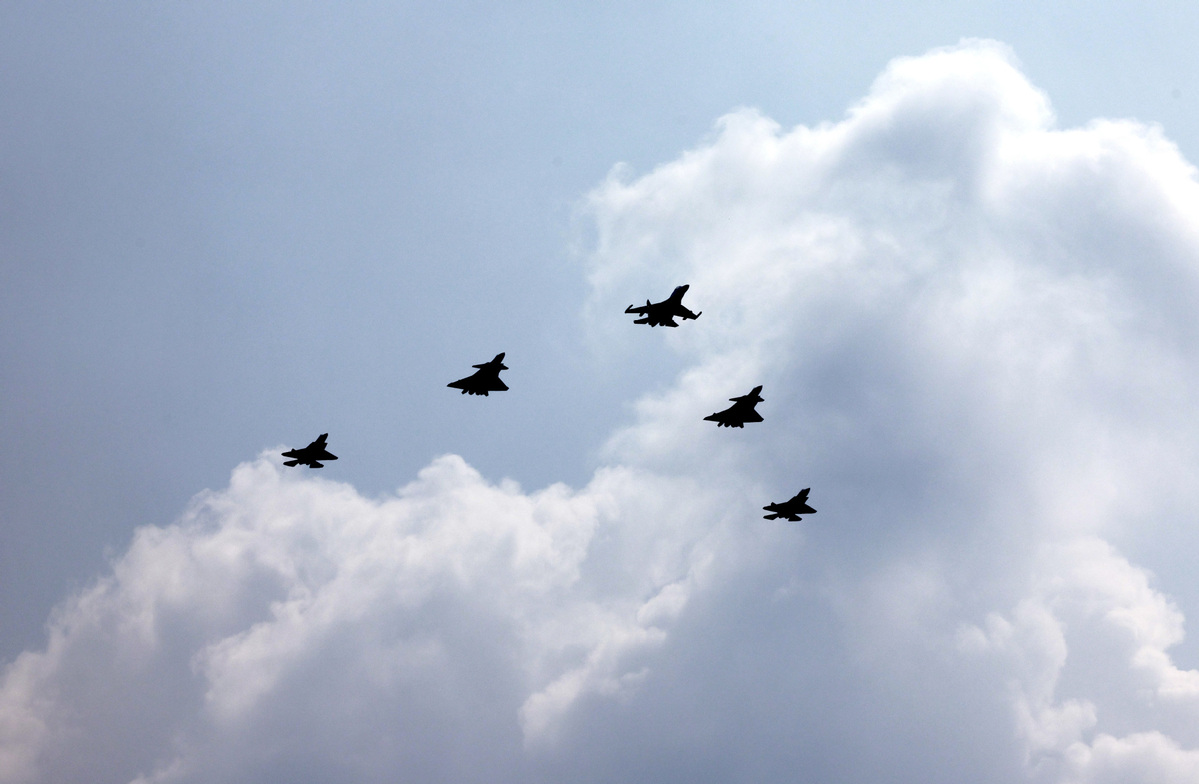
The People's Liberation Army has displayed all types of its fifth-generation combat planes on active duty for the first time via the grand parade on Wednesday, a move that observers say is intended to show its world-class air prowess.
All of the five models — the J-20, J-20A, J-20S and J-35A of the PLA Air Force as well as the PLA Navy's J-35 — thundered past the Tian'anmen Square in central Beijing as they flew in several arrowhead-shaped groups around the end of a 70-minute parade marking the 80th anniversary of the victory in the Chinese People's War of Resistance Against Japanese Aggression (1931-45) and the World Anti-Fascist War.
This is the first time in the world that five models of cutting-edge stealth fighter jets have appeared in one parade.
It also marked the maiden public performance of the J-20S, the world's first and only model of twin-seat stealth jet; the J-20A, an upgraded single-seat variant of the J-20 baseline configuration; and the J-35, the first radar-evading combat plane in the Navy.
Wang Yanan, chief editor of Aerospace Knowledge magazine, told China Daily that this is the first time in the history of the People's Republic of China that so much new hardware has been sent to a parade.
"What we have seen is an unprecedented unveiling of China's domestically developed weaponry such as those new aircraft. All of these previously unseen weapons have state-of-the-art designs and superior capabilities, and have tremendously enhanced the Chinese armed forces' overall strength," Wang said.
"Specifically speaking, the appearance of the J-20 and J-35 families on a considerable scale means that the Air Force and Navy are in the middle of a systemic transformation that highlights the core role of fifth-generation types, namely these stealth jets," he said, stating that the PLA is likely to be ahead of other militaries around the globe in terms of establishing a comprehensive fifth-generation air combat system.
According to a statement published before the V-Day parade by a temporary command in charge of the event's aircraft squadrons, the new military planes "have been deployed to handle high-intensity warfare" while their appearance was meant to "reflect the PLA's strength to deter adversaries and safeguard China's airspace."
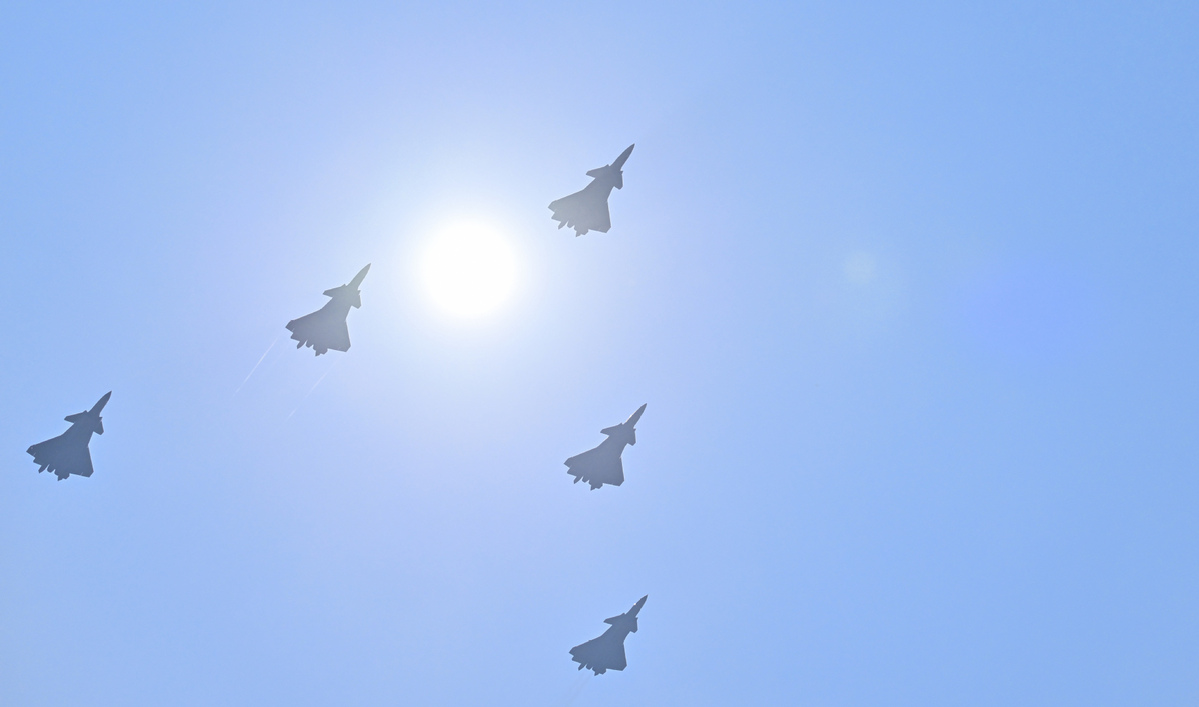
J-20S
The J-20S, like other members of the J-20 series, was designed by the Chengdu Aircraft Design and Research Institute, an Aviation Industry Corp of China subsidiary in Sichuan province, and was declassified in November 2024 by appearing in the form of a small-scale mock-up at the 15th China International Aviation and Aerospace Exhibition.
According to designers at AVIC, the J-20S is a heavy-duty radar-evading fighter jet with long-range operation and multifunction capabilities.
The twin-seat plane is characterized by its supreme ability to seize superiority in air combat, carry out precision strikes against land and sea targets, and perform battlefield situational awareness, electronic jamming as well as tactical command and control operations.
In addition to conventional tasks, the J-20S can team up with unmanned planes in air combat, designers said.
Fu Qianshao, an aircraft researcher who had served with the Air Force for decades, said the jet is likely to be tasked with conducting electronic warfare operations or guiding unmanned aircraft to hit enemy targets.
"The additional operator in the backseat is responsible for controlling electronic warfare instruments or coordinating strike operations by his or her plane and attack drones. His or her work can enable the J-20S to better use precision-guided munitions and connect with the airborne early-warning and control systems," he said. "It is better to have an operator to focus on these extended functions because only one pilot would be too busy to take care of all of those tasks in real air combat."
An extra seat will bring more benefits than these, the veteran researcher added.
"The twin-seat variant can have a backup flight-control system installed for the backseat operator to use in case the main system malfunctions or is damaged in action, or the front-seat pilot becomes incapacitated.
"It can also be used to train new aviators to make them familiar with the cutting-edge fighter jet as quickly as possible," Fu stated.
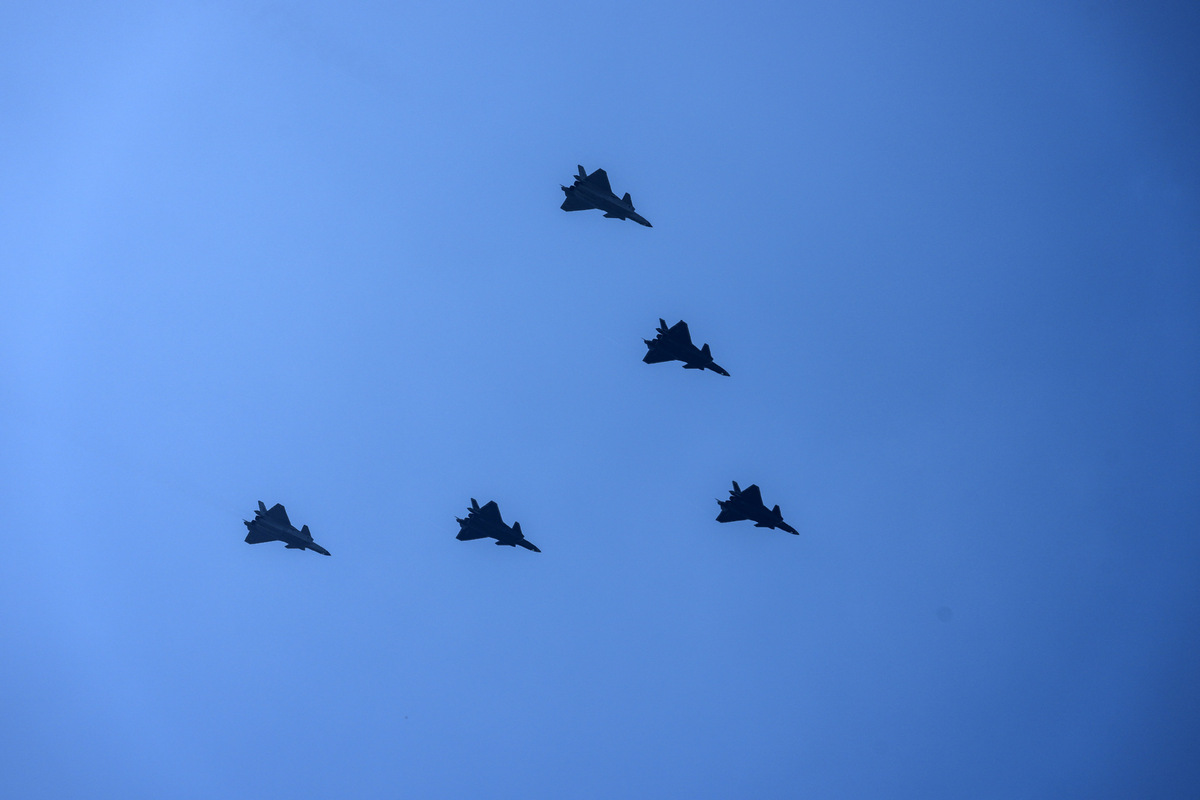
J-20A
Another J-20 variant — the J-20A — has several external differences from the baseline model: an enlarged spine, reshaped nosecone, and modified engine intakes optimized for new, mightier engines developed by Chinese engineers on their own.
Its engines are widely believed to have thrust vector control technology that provides significant benefits in flight maneuverability.
The technology enables a pilot to adjust the engine exhaust nozzles to redirect thrust, allowing the plane to carry out previously unimaginable maneuvers at very high angles of attack, meaning its nose is pointed at an angle greatly exceeding the jet's current vector.
This capability is expected to be a great advantage for fighter aviators when evading a missile or seeking an advantageous position in within-visual-range air combat.
In addition to stunning tactical maneuvers, the new powerplants may also bring about higher fuel efficiency and longer flight range.
Wang Yanan, chief editor of Aerospace Knowledge magazine, said the J-20A's optimized aerodynamic configuration, especially the slightly raised spine, has created a direct benefit: a bigger inner space that can be used for extra sensors or fuel tanks.
"Raising the spine was not feasible for previous types of fighter jets because their pilots depend more or less on their bare eyes to spot suspicious objects so their cockpit canopy should have a 360-degree visual field, particularly in the backward direction.
"Now, thanks to avionics enhancements and sensor improvements, a J-20A pilot no longer needs to turn his or her head to observe situations behind as several passive electro-optical sensors mounted around the fuselage can give the aviator an omnidirectional view," the editor explained, adding that the redesigned spine also helps to reduce aerodynamic drag.
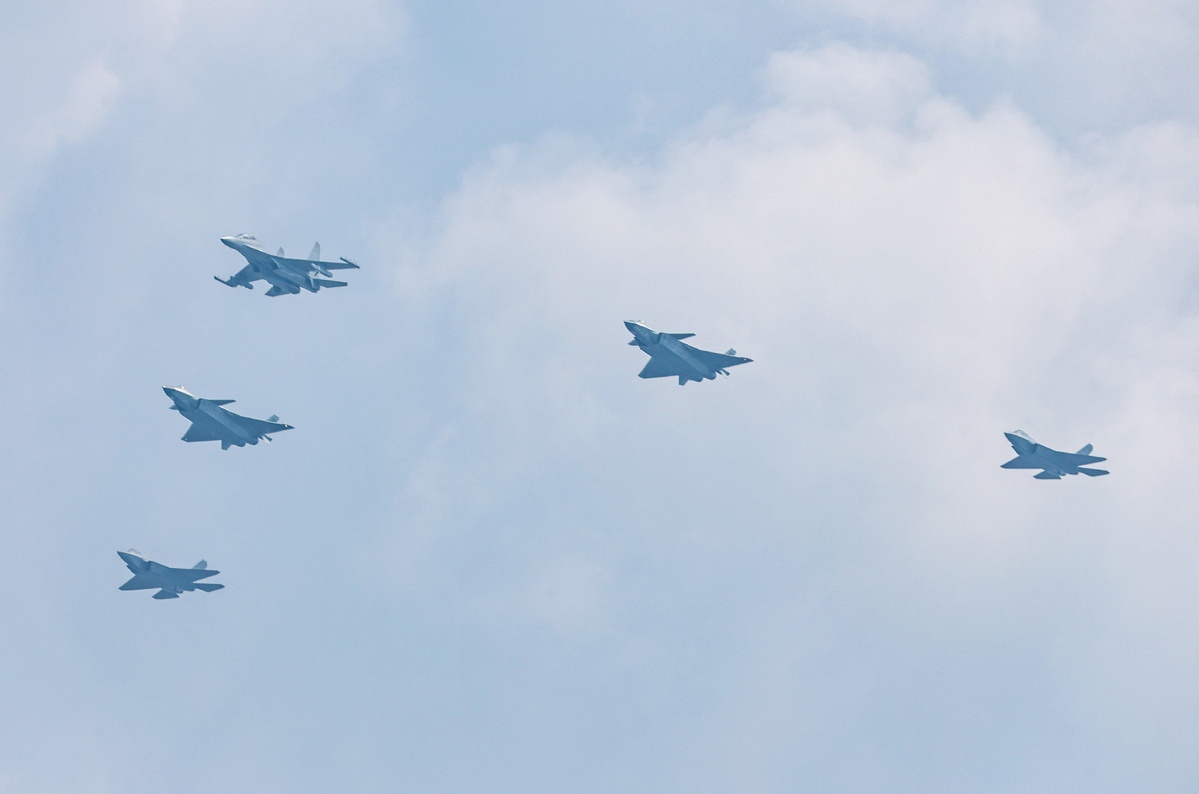
J-35A
Another recent addition to the Air Force's stealth arsenal, the J-35A, also partook in the parade's air performance.
Designed by AVIC's Shenyang Aircraft Design and Research Institute in Liaoning province, the J-35A is a single-seat, twin-engine stealth multirole fighter with a conventional aerodynamic configuration.
According to its designers, the jet's primary task is to seize and maintain air superiority, with a secondary mission of carrying out airstrikes against land and sea targets.
Specifically, the jet will be used to engage with hostile aircraft including fighters and bombers, shoot down enemy cruise missiles, and eliminate adversaries' land- and ship-based air defense hardware.
Wang Mingzhi, a senior researcher with the Air Force, said the J-20 series and J-35A will complement each other in air combat in the future.
"The heavy-duty J-20 models will be used to fight for air dominance while the midsize J35A will be suitable for various kinds of operations ranging from engaging with hostile fighters to precision assaults against land and sea targets," he said.
The J-35A made its first public flight performance at the 15th China International Aviation and Aerospace Exhibition, shortly after it was declassified by the Air Force.
Following the recent delivery of the first batch of J-35As, China has become the second nation after the United States to have two families of stealth fighter jets in active service.
ALSO READ: HK marks 80th anniversary of victory against fascism
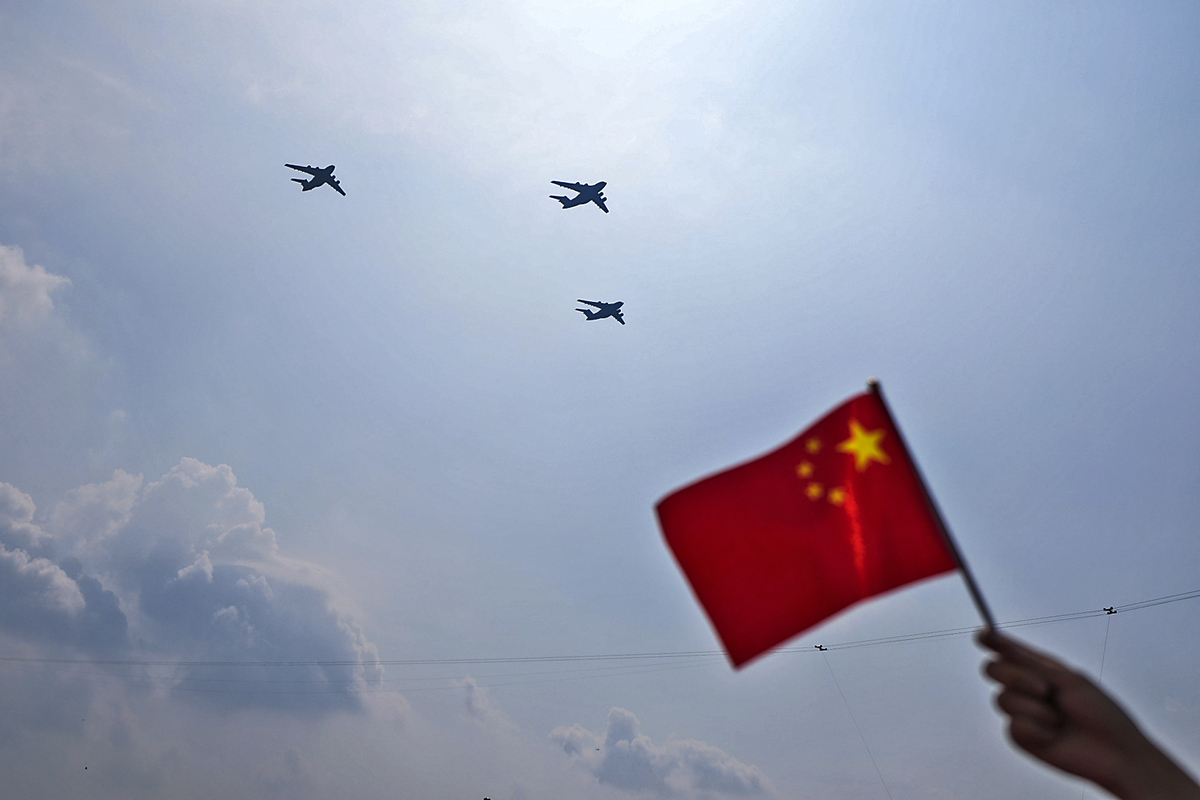
Y-20B
Besides these new fighter jets, the Air Force also sent a re-engined version of its Y-20 strategic transport aircraft to fly in the parade.
Compared with the baseline model in the Y-20 family, the Y-20B cargo jet's most distinctive trait is its new propulsion system, which appears to consist of four domestically designed high-bypass turbofan engines.
The Y-20's baseline configuration took its maiden flight in January 2013, and began to be delivered to the Air Force in July 2016. It uses four Russian engines as powerplants.
Wang Yanan said that the new domestically built engine has stronger thrust and lower fuel consumption, and that means the Y-20B is now able to fly farther and carry more cargo. Consequently, the new transport aircraft allows the PLA to deploy and sustain its forces over much greater distances, as befitting a true global power, he added.
On the ground, multiple new types of combat drones were carried by trucks traveling in the parade, pointing to the possibility that the Air Force may place more duties on the pilotless jets.
Wu Peixin, an aviation industry observer, said that it has been a shared trend for air powers to integrate their stealth fighters with uncrewed platforms' capabilities.
"A stealth jet is very expensive and sophisticated, while a drone is much cheaper, and is expendable. In air combat, pilots of stealth jets can operate and guide a group of strike drones to launch missiles toward targets and even hit the targets by themselves, without risking the safety of the pilots and their jets. Those unmanned planes will also be able to detect signals of enemy assets and then autonomously chart out a route to penetrate defense and take out the targets," he said, adding that this new pattern will definitely revolutionize air combat in the future.

J-35
During the aircraft performance in the V-Day parade, the Navy showed a host of its new assets, including the eye-catching J-35, the branch's first stealth jet.
Designed for carrier deployment, the J-35 can be launched by both the ski-jump takeoff system, namely an upwardly curved ramp used by China's operating carriers CNS Liaoning and CNS Shandong, and the electromagnetic catapult on CNS Fujian, the nation's third aircraft carrier that is in the final stage of sea trials.
The model is characterized by low-observable designs, state-of-the-art manufacturing techniques, a world-class radar and cutting-edge sensors, as well as a wide range of munition options.
Zhang Xuefeng, a military hardware observer and retired PLA officer, said that the exterior of the J-35 looks "smooth and clean", which represents elaborate stealth designs. Together with China's unique radar-absorbing composite materials, it makes the new fighter a leader among all planes in the world in terms of stealth performance.
"Its delivery has brought a major power upgrade to the Chinese naval aviation force," he stated.
Song Zhongping, a military affairs commentator and also a PLA veteran, said that though the J-15, the first carrier-borne fighter jet deployed in China's carrier force, has good capabilities comparable to its foreign rivals in the same generation, it is not good enough to confront next-generation aircraft with stealth capability. Therefore, it is necessary for China to field a type of naval stealth fighter to handle challenges from neighboring navies equipped with such jets.
"Upon its deployment, the J-35 can team up with the J-15 in air combat and strike operations. The J-35's biggest edge is the stealth capability, and it also has huge strength in fleet defense operations. The combination of J-15 and J-35 will enable each of them to give play to their advantages in tasks," he said.
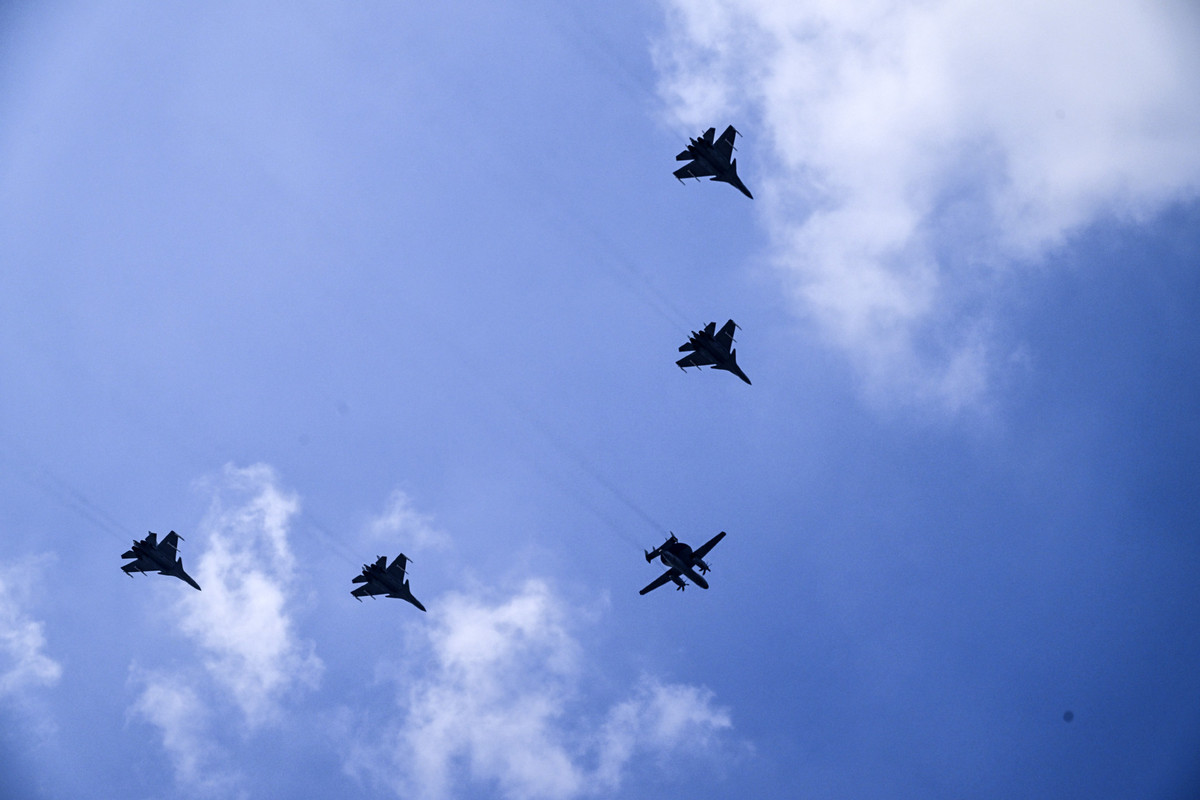
KJ-600
One of the features in the carrier-borne aircraft squadron was the public debut of the KJ-600 early-warning and control plane.
Co-developed by aircraft designers at AVIC and radar researchers from China Electronics Technology Group Corp, one of the world's largest suppliers of defense electronics, KJ-600 is the fourth fixed-wing early-warning and control plane deployed by the Navy and also the largest, heaviest and most capable of its kind to be used on Chinese aircraft carriers.
Its first carrier will be the Fujian, which has conducted several sea trials and is expected to enter service in the coming months.
The KJ-600 is propelled by two turboprop engines, and sports a high-mounted wing, a quad-fin tail, tricycle gear and a large dorsal rotodome, which analysts have claimed to house an active electronically scanned array radar.
The use of a quad-fin tail promises safety and stability when the plane takes off or lands on a carrier, and is also intended to suit for the limited space inside the hangar.
Xiong Jia, a defense technology observer, said that in naval warfare, the ability to detect incoming hostile objects as far as possible is crucial to ensuring the safety of one's own ships.
"Because the greater the detection distance, the more thorough the preparations one can make for defense. However, ship-borne radars are constrained by a host of factors so they are unable to spot and track hostile targets at long range. For instance, the curvature of the Earth greatly restricts their detection range for low-altitude targets. Therefore, carrier-based early-warning aircraft are essential," he explained.
Zhang Xuefeng said the KJ-600 is the final component needed to complete the Chinese carrier force's combat system, significantly enhancing carrier strike groups' fighting prowess.
"An important role of carriers is to conduct land and sea strike missions, which requires their group to make forward deployment and move beyond the detection and support range of land-based radars. With fixed-wing early-warning and control aircraft, they can be deployed far from shore to undertake reconnaissance and attack tasks," he said.


